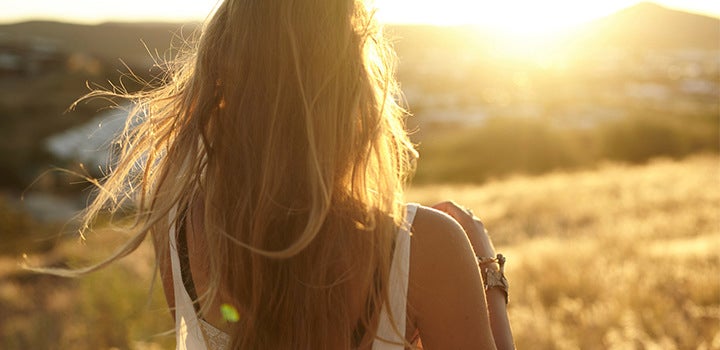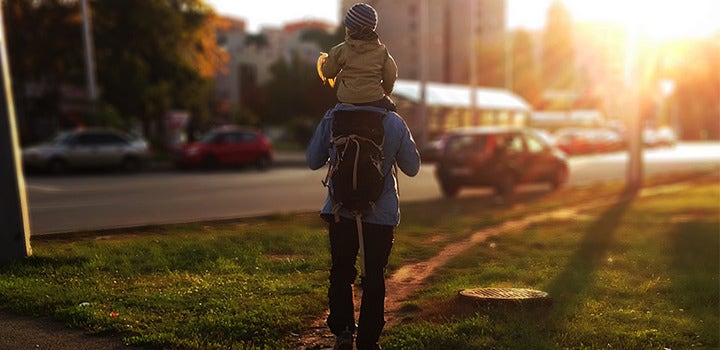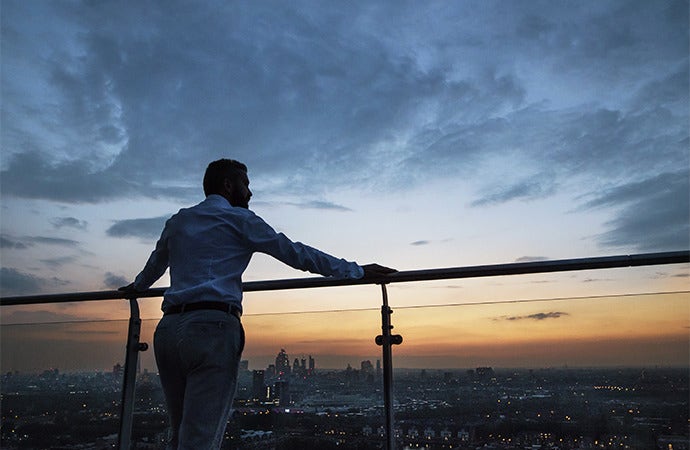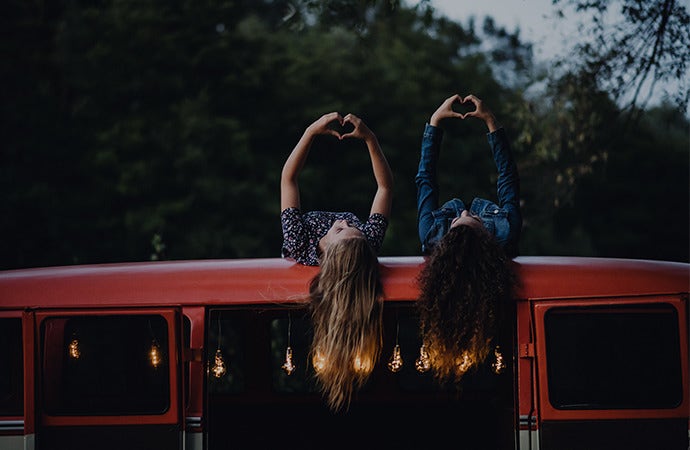Photography
When is golden hour & how to do golden hour photography
Learn how to take advantage of the warm, soft light of the golden hour, considered the best time of day to shoot.

Photography
Learn how to take advantage of the warm, soft light of the golden hour, considered the best time of day to shoot.
The last hour before sunset and the first hour after sunrise are coveted by professional photographers. Referred to as “the golden hour” or “magic hour,” these times provide the perfect light to capture stunning photos. Learning to harness the power of the golden hour is a tool every photographer can use.
The golden hour is known for producing beautiful natural light that is easy to work with. “It’s hard to overexpose or underexpose parts of an image, like a subject’s face, because the light is very even and has a beautiful golden hue,” says photographer Jenn Byrne. This is due to three main reasons:

Unlike other times of the day, the golden hour doesn’t have sun shining down directly — its rays come in at an angle, diffusing the light. This softer type of light is typically more flattering. “Skin tones get washed out by really direct sunlight. But the golden hue makes for beautiful skin tones that are hard to blow out,” explains Byrne.

During the golden hour, the sun is at a low angle in the sky, creating longer shadows and flattering lighting situations you can use for more creative effects. Rim lighting, backlighting, side lighting, silhouettes, sunbursts, and lens flares are all at your disposal during the golden hour.

On the Kelvin color temperature spectrum, the golden hour light is warmer, with lots of yellows, oranges, and reds. The atmosphere filters out blue light when the sun is closer to the horizon, leaving you with a color palette that people associate with feelings of happiness and warmth.
More than any other time of day, the golden hour puts the photographer in a time crunch. “What will happen ten minutes from now is going to be radically different than what happened ten minutes before,” photographer Tina Tryforos says of the golden hour. The golden hour is a short window, after which the sun will slip below the horizon or level off into harsher light after sunrise. “It heightens the need to plan ahead,” says landscape photographer Steve Schwindt. “You need to have an idea of what you want to shoot beforehand.” Prep work can go a long way to make sure you get the results you want:
Scout your location beforehand and visualize your compositions so you can maximize your time when the golden hour starts. If you can’t get there early, prepare by looking at other photographers’ work in the same spot to see what’s been done.
There are apps that list sunset times and tell you exactly where the sun will be at any given time or place. Using these golden hour calculators can take some of the guesswork out of the golden hour.
The light is changing every minute — faster than you’ll realize in the moment. Shoot more frames more often to ensure you capture every change; this will give you more options to work with afterward.
After the sun sets, you’ll be treated to the “blue hour,” the brief window of time following sunset, when the world is bathed in a deep blue color. If you’re already out, stick around for a few blue hour photos.


Finding a balance between the sky and darker areas of a scene can be hard even during the golden hour. Shooting into the sun with your subject’s back to the light will produce a beautiful backlit effect, but it leaves your subject’s face in shadow. “You don’t have a ton of light on their face, so if you’re not exposing your camera properly, you can lose all of the beautiful highlights on their skin,” explains photographer David Green. There are a number of different ways to combat this:
Green recommends using an adjustment brush to pull up shadows on individual parts. Pulling up shadows and pulling down highlights can help restore balance between the brightest and darkest parts of an image. Learn how to use shadow and highlight clippings in Adobe Lightroom and how to use adjustment brushes in Lightroom.
“JPEG files make editing and processing photos more difficult because you have less data to work with,” Schwindt explains. As the sun sets and less light is available, the ability to recover deep shadows in underexposed parts of your photos becomes increasingly important.
To pull up deep shadows in post-processing, you need to expose your photo properly, but your camera also needs to capture the necessary information. For best results, use a camera with a high dynamic range, which measures how many stops of exposure it can capture in a single frame. The best cameras for the job will typically be full-frame DSLRs.
Flashes or reflectors help fill in the shadows on your subject’s face for a more evenly lit exposure. “It can be hard to include the sky because the exposure of it and the subject are two different things. Using fill flash can really make a difference. It’ll illuminate the person,” says Tryforos.
Post-processing tools open up a world of possibilities for photographing the golden hour. If you’re having trouble keeping your highlights from being blown out, you can edit for results you can’t get in-camera. This requires more forethought. “Have a vision for how you want the photograph to turn out. That will impact what you do in post-processing,” advises Schwindt. “I’m always shooting to edit — always thinking about how the photo’s going to look once I bring all the colors up,” adds Green.
One technique used by landscape photographers is to take multiple photos at different exposures and combine them in Lightroom. “You can blend different exposures to compensate for the much brighter sky in comparison to a darker foreground,” explains Schwindt. For Adobe Photoshop, check out this tutorial to learn how to merge HDR photos.
Learn how to enhance the colors of a sunset by controlling temperature, tint, and saturation in your photos.
“Direct sunlight from the golden hour can make skin look quite orange. I like backlit photos to avoid that look,” says Byrne. But if you don’t want all your photos to be backlit, learning to correct skin tones by making adjustments helps you avoid this problem while keeping your lighting options open.
There are a lot of considerations that go into a successful golden hour shoot. But a little planning and know-how can help eliminate those worries so you can step back and take in the beautiful light around you.
Contributors
Based on your location, we think you may prefer the United States website, where you'll get regional content, offerings, and pricing.